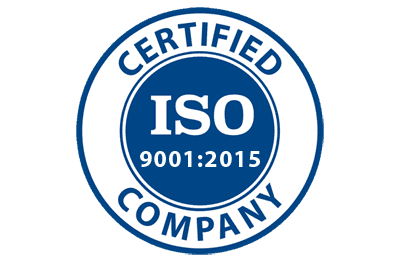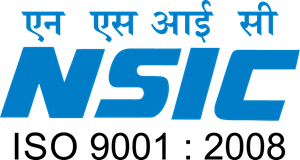









Social Media Analysis
Social media analytics is commonly used as a medium for accessing the feelings of your clients towards a particular product or service. This method known as sentiment analysis uses advanced methods of algorithms to evaluate a client’s comment about the brand and report the feeling detected.
However, these algorithms conduct an emotional assessment of all interactions involving the brand's name and back information on the effectiveness of its marketing campaign. The parameters measured by social media analytics may range from client commitment which could be gotten from the number of mentions of the brand's name.
With this analysis, online brands can monitor how people react to their product and services, through the number of followers on each and mentions in their comments.
Functioning Framework of Social Media Analytics
At this point, the question of ‘how does it work’ pertinently pops up in your mind. Well, media analysis would give you guidance on how and where to channel your efforts for better results. It brings to your notice your most effective strategy and saves you the time of experimenting with others.
Social media analytics enhances your online presence with these methods:
Evaluating Your Best Strategy
Media analytics brings to light your marketing strategy which has the best impact on your brand's online campaigns. For instance, it's widely accepted that constant quality contents are the strategy used by most brands to pull traffic. But with the analysis, you get to see which has a higher impact than others and you streamline your efforts to that.
If you have gotten the parameters, you now know what works best for you and where, yes you’ve also known which platform has the highest acceptance level for your brand. Once you've ascertained your best strategy (contents and media platform) it helps you get better results for lesser work.
Assessing Your Development
There is no point in investing in your strategies if you can't keep track of their impact on your online presence. You'll want to be sure that each investment yields worthy returns. Now it's sure as daylight that it's difficult to track the impact of some strategies like the paid ads and per click campaigns. These traffic stats come with many proclivities and are to an extent unreliable. But with extensive analytics, you'll be able to see who likes your product and who doesn't through their comments. It also helps you see the effect of your various strategies and how they've helped your brand's development over time. At least you get to see the returns on your investment.
Intensifying Your Effective Strategies
You have seen your most effective strategy; you have also seen the impact it has on your brand's online presence. The next thing is to use the results of the analysis to intensify your efforts towards the best channels. You've seen which platforms you thrive most on and the ones you don't do so well on; strive to get them up-to-speed. Maybe different strategies work with different platforms; armed with the data, you can try to apply uniform efforts on all possible channels. This information keeps you in a better standing to improve your online presence.
Working Techniques of Social Media Analytics
Various techniques are involved in social media analytics that supports its different frameworks. The sentiment analysis enhances the evaluation stage to an extent and also aids in assessment. Other techniques also play a part in the other phases. Below we'll see these techniques and how they impact the various stage
Sentiment Analysis (Opinion Mining)
This is the major tool used by social media analysts to observe the systems of media platforms. It controls system statistics and other analytical tools and uses them to collect opinions of online clients. This information, formed from those opinions is used to evaluate product inadequacies and marketing trends.
Methods you could use in sentiment analysis include
Polarity Lexicon: These include the good and bad comments by users who talk about the product on online platforms. Phrase Counts: This entails that the more a product is brought up on the comment section the more it's assumed to be liked. Semantic methods: These statistics take into consideration the difference between good and bad comments. Once the product is mentioned, semantics calculates the algebraic distance between positive or negative comments. Even though sentiment analysis is the most common technique, it harbours few limitations. Some data collected through this method may be biased.
Topic Modelling
This technique is used to decipher the prevalent topics from large quantities of a blog. The topics revealed could be used to enhance other analytical processes such as the content with most user interests. Topic modelling uses a variety of advanced statistics and machine learning techniques. For instance, some models spot silent topics by recurrent frequencies of words within a chat or in the comment section.
Trend Analysis
Trend analysis is used for identifying and predicting future outcomes and behaviors based on stats gathered over time. Methods like the development of client base or sales, projecting the efficiency of PPC, predicting the movements of the stock market. Trend analysis is based on reliable data collected from deterioration analysis or time-series analysis. You could also employ methods such as neural networks and support vector machines.
Visual Analysis
This involves logical analysis aided by user-friendly visual interfaces. The visual analysis involves collecting data and using the data to inform marketing decisions. This means that the success of this technique depends on your ability to interpret insights from visual data.
When information is released, a combination of the human brain and computer analysis is used to deduce information for decision making
These social media analytics tools and techniques combine efficiently to influence marketing decisions for the improvement of your online brand.
Analytics Tools
Let's take a look at an array of different social media analytics tools for different social media platforms.
Page insights (Facebook)Advert reports (Facebook)Twitter Analytics (Twitter) Pinterest Analysis (Pinterest) Analytics for individual users and business owners (LinkedIn) Hootsuite Buffer Sprout Social Viral Woot How Sociable
Importance of Social Media Analytics
While discussing the framework and techniques of social media analytics, we have mentioned a variety of benefits. Below we consider the importance in more detail.
Improved Content Quality
Social media analytics helps you understand your contents that drive more user acceptance. In this way, you get to know which post had more positive views and then improve on that line of content. Platforms like Twitter and Facebook have built-in analytics that shows you how well your posts perform. On Twitter, you can track the performance of your images, videos, and links. On image-focused platforms like Instagram and Pinterest, you evaluate which image appeals more to customers. You can also check the level of traffic each content is generating for you using Google Analytics; you're now in a better position to better these contents.
Competitive Edge
With social media analytics tools, you could track your competitors' growth on social media. They also put in good work with regards to strategies and contents; analytics aids you to improve on their mistakes and flaws. With the statistical analysis, you would fathom the level of impact each of their strategy’s garners. You could take a peek into their progress levels by tracking the percentage of traffic each ad campaign or content adds to their website. This way you get to stay steps ahead, because you're thriving on their success and improving on their failures. Sounds shady, doesn’t it? It Helps You Know Your Best Social Media Platform
You have seen the stats, and now know where your major success comes from and what brings about it. Media analytics exposes the media platform that best suits your marketing strategies. of course, you should know that the number of users on a platform does not guarantee increased traffic levels. Smaller user base platforms could offer better leverage for your market strategies and traffic generation. Stat analysis helps you evaluate this impact and make the right decisions. This data could be used to streamline your energy to the appropriate platforms. And this leads to far better results with little effort.
Better Understanding of Client Base
From collected data, you will see various facts that will help you understand your online audience. Like the time they are most online and most attentive. This helps you know when to drop unique content to rave in traffic. In this same way, your ad campaigns are appreciated more when your target audience is available and attentive. Analytics show you the best time to implement a strategy through this method. Some platforms help you keep track of these through their built-in analytics tools.The post section of Facebook can avail you of such data and aids you in a pattern the way and manner you drop your posts.
Enhanced Marketing Strategies
Social media analytics helps you enhance your marketing strategy by showing which of them worked best and how they fared. By studying your strategy progress and that of your competitors you're sure to spot out some salient errors. When you improve on these mistakes you will hit sky-high results. Your study can be enhanced by the concept of social media listening. This involves following discussions online to ascertain people's view on a particular content, as a campaign or page. Then use the excerpts to develop a failure-proof campaign or strategy. These tracking and evaluations can be carried out using any of the social media analytics tools mentioned above. The rapid growth of social media has offered companies an invaluable opportunity to market their brand online. This constant development has led many online brands to come up with sophisticated strategies to stay at the forefront of the competition
The importance of social media analytics lies in the way it helps online brands connect with their customers. The ability to engage your clients better based on specific statistics (provided by social media analytics); enhances the marketers'’ capabilities to convert this engagement to monetary growth.
more details